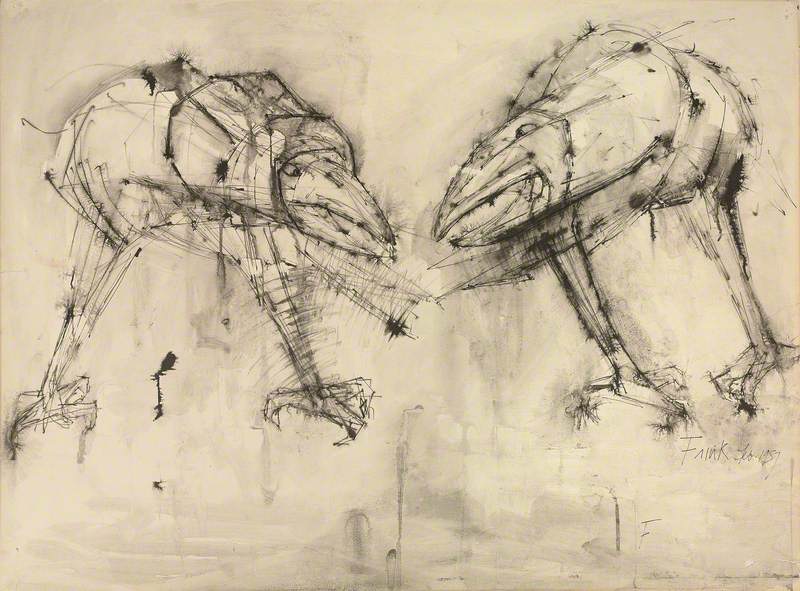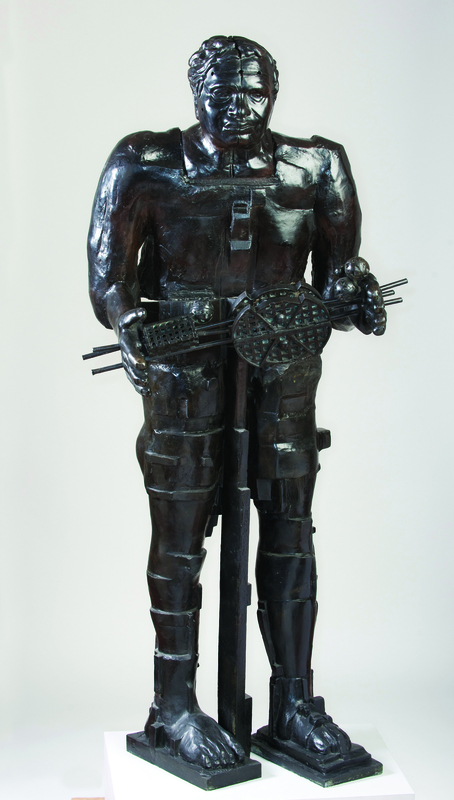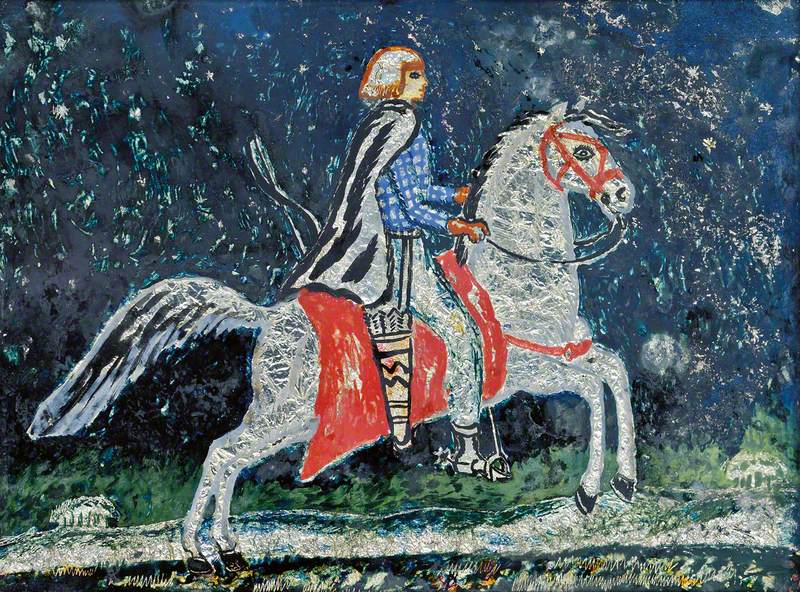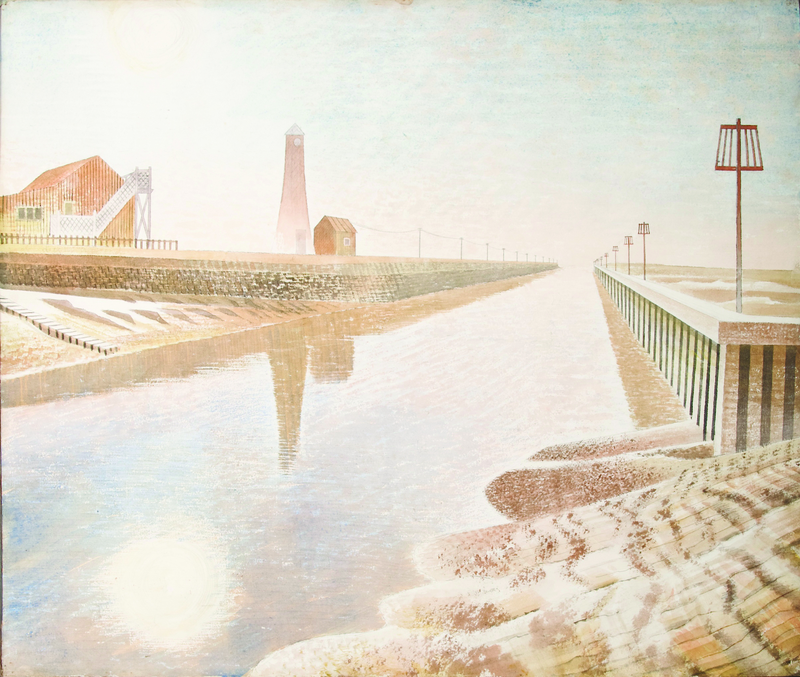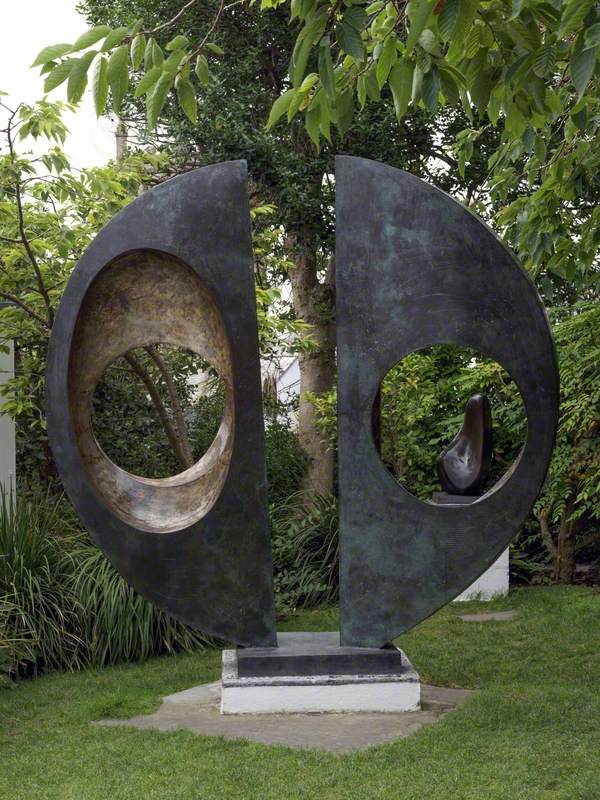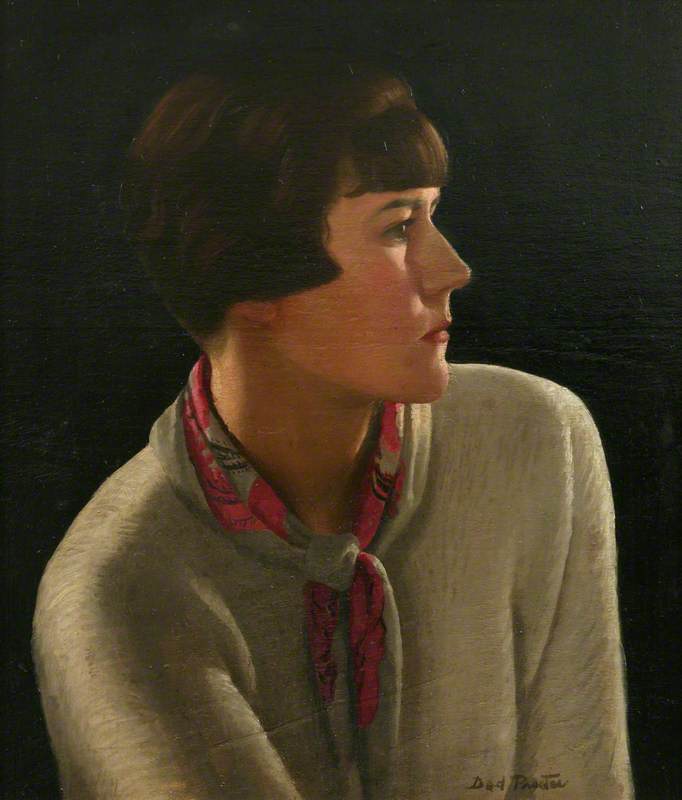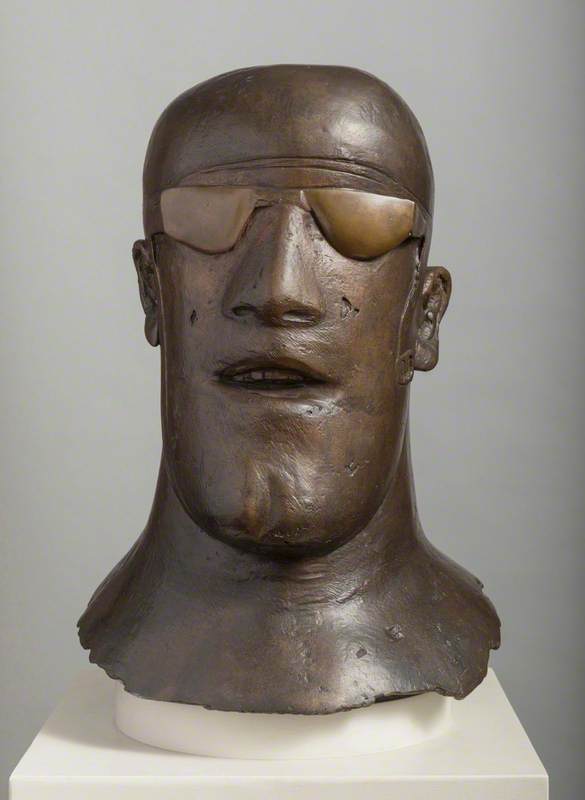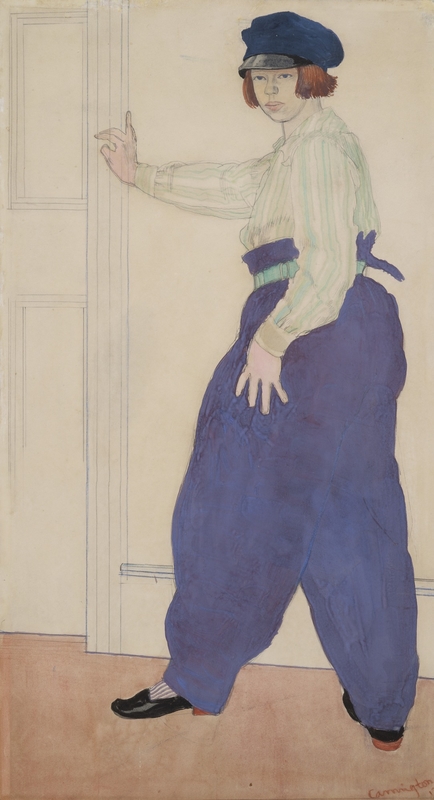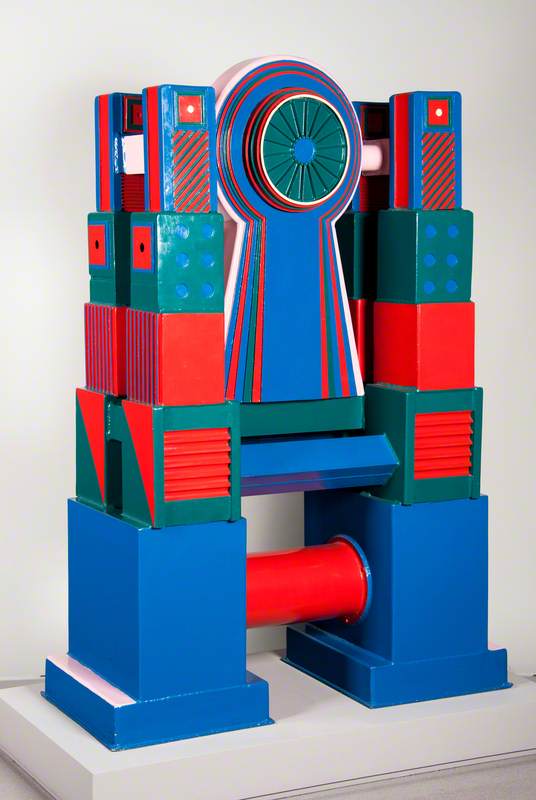The Ingram Collection is one of the most significant, publicly accessible collections of modern British art, available to all through a programme of loans and exhibitions. With over 600 artworks spanning 100 years of British art, it includes important British artists of the 20th Century, and a strong and in-depth holding of sculpture. The collection also holds works by emerging artists. The Ingram Prize, established in 2016 celebrates the work and early careers of UK art school graduates.
Art Unlocked is an online talk series by Art UK in collaboration with Bloomberg Philanthropies. This Curation is based on a talk by Director Jo Baring, on 20th September 2023. You can watch a recording of the talk on Art UK's YouTube channel.
-
Warrior Birds 1957
Frink was still an art student at Chelsea, only 22 years old, when the Tate bought ‘Bird’ in the early 1950s, from an exhibition at the Beaux Art Gallery in London. Her work of this time – expressionistic with flayed, violent tense forms led to her being closely associated with the ‘Geometry of Fear’ sculptors, who were men older than Frink, such as Lynn Chadwick and Reg Butler.
It has been said that Frink’s early birds and birdmen are creatures of their time. She did understand that their aptness to the historical moment had played a role in winning her early recognition. Frink said later that the birds were “really vehicles for strong feelings of pain, tension, aggression and predatoriness”.
Elisabeth Frink (1930–1993)
Pen & black ink on paper
H 55.5 x W 75.2 cm
The Ingram Collection of Modern British and Contemporary Art
-
Sculpture with Colour and Strings 1961
In 1939, the year this sculpture was conceived, Hepworth moved to St Ives, Cornwall. The sinuous forms and taut strings in this work show Hepworth’s response to the ancient rhythms of the Cornish landscape and sea: the interplay of light, the ebb and flow of tides, and the movement of waves crashing against rocks, creating cavities and internal spaces within the landscape. Hepworth's strings define the space within her sculptures, bringing a sense of fluidity and tension.
Barbara Hepworth (1903–1975)
Bronze with light brown & light green patina & string
H 24.8 cm
The Ingram Collection of Modern British and Contemporary Art
-
Portrait of the Artist 1988
This work is modelled on Paolozzi’s sculpture ‘The artist as Hephaestus’ which used to stand at High Holborn in London. Hephaestus was the Greek god of blacksmiths, craftsmanship, and fire, known for his exceptional skills as a metalworker and sculptor, and for crafting the divine weapons and tools of the gods on Mount Olympus. He was lame, often described as having a physical disability, which added depth to his character and symbolized the duality of strength and vulnerability in his craftsmanship. He also built bronze automatons to work for him, something which particularly appealed to Paolozzi with his interest in technology and machinery.
Eduardo Luigi Paolozzi (1924–2005)
Bronze with black patina
H 149.9 cm
The Ingram Collection of Modern British and Contemporary Art
-
Iris Tree on a Horse c.1920s
This is one of Carrington’s so-called 'tinselled pictures' which she had begun making in 1923. They found a popular audience and she sold them regularly as well as giving them as gifts to friends. This work depicts Iris Tree as a fearless heroine galloping freely on a horse. Iris Tree (1897-1968) was an actress and poet who was also a sought after model by artist, working with artists such as Modigliani. She was particularly famed for her bobbed hair. This work was owned by Iris Tree, and had a talismanic quality for her, keeping it with her and displaying it stacked against books in her one-room apartment in Rome.
Dora Carrington (1893–1932)
Oil, ink, silver foil & mixed media on glass
H 11 x W 14 cm
The Ingram Collection of Modern British and Contemporary Art
-
Rye Harbour 1938
This work shows Ravilious' distinctive style, characterised by intricate detail and muted colour palette. The meticulous attention to the play of light on the water's surface imbues the painting with a sense of tranquility, but beneath the surface of this idyllic work, there exists an undercurrent of menacing elements that add depth and complexity. The calm waters belie a sense of hidden danger, as eye is drawn to the horizon stretching out towards the Continent a year before the outbreak of WW2. Through his use of light and shadow, and the juxtaposition of the natural and the man-made, Ravilious invites us to contemplate the enigmatic and unsettling aspects of the landscape that often go unnoticed in the world around us.
Eric Ravilious (1903–1942)
Watercolour over graphite on paper
H 42.3 x W 51 cm
The Ingram Collection of Modern British and Contemporary Art
-
The Golden Girl c.1930
Dod Procter is best known for her paintings of women, showcasing her ability to paint softly draped clothes and her mastery of tonal harmonies.
Procter painted the figure in the classical tradition, the elegant simplicity of her paintings part of a new classicism which was a move away from the machine age works that were characteristic of the artistic avant-garde in the years before WWW1. The title of this painting, The Golden Girl, draws attention to the blonde hair of the sitter, reminiscent of the flaxen heroines of ancient Greece. Her paintings of women of this time conveyed the timelessness and sculptural quality of classical civilisation, speaking directly to a nation traumatised by war.
Dod Procter (1892–1972)
Oil on canvas
H 71 x W 57 cm
The Ingram Collection of Modern British and Contemporary Art
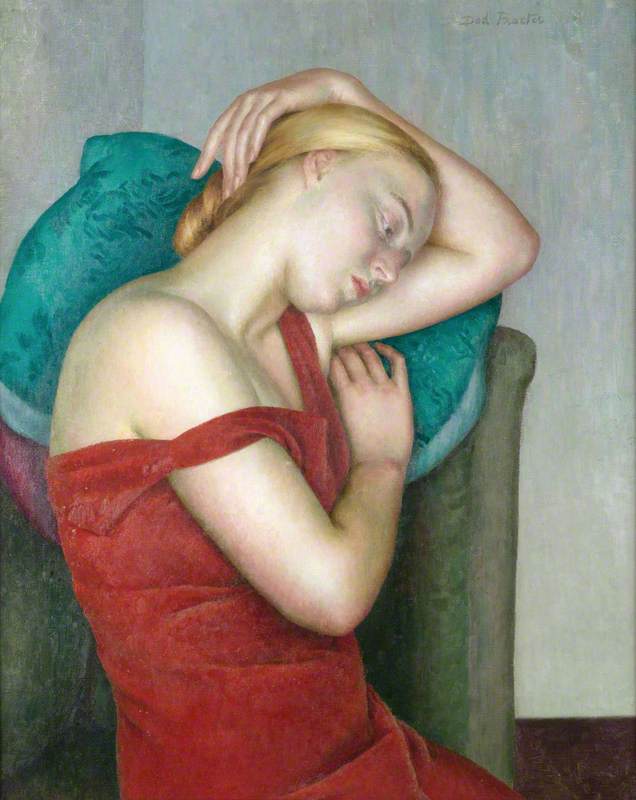 © the artist's estate / Bridgeman Images. Image credit: The Ingram Collection of Modern British and Contemporary Art
© the artist's estate / Bridgeman Images. Image credit: The Ingram Collection of Modern British and Contemporary Art
